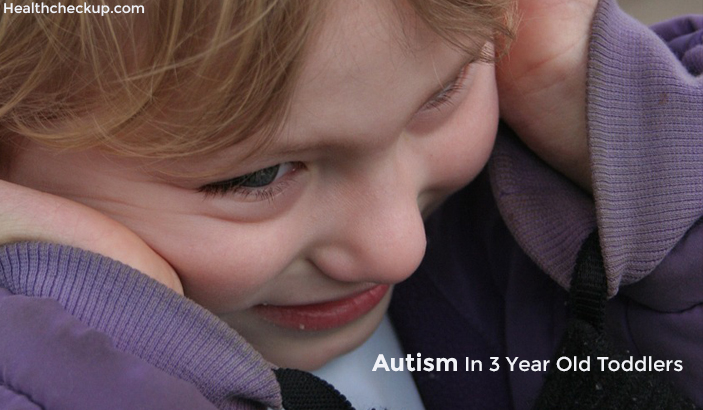Autism is a spectrum of a disorder which manifests as a developmental problem in communication and behavior. It is 4 times common in boys than in girls and shows a 1% prevalence. Three kinds of abnormalities are required to make the diagnosis, which was initially identified by Kanner in 1943 and are still been used in DSM-IV and ICD-10 diagnostic criteria. These include abnormalities of social development, abnormalities of communication and restriction of interests and behaviour. To make an effective diagnosis these signs and symptoms should manifest before the age of 3 years.
Autism Should Be Suspected In A 3-Year-Old Toddler With Following Signs and Symptoms
Abnormalities of Social Development
These children are unable to respond to the affectionate emotions of their parents and do not maintain eye contact even with their mothers. They do not seek comfort from their parents when they are hurt and appear to dislike cuddling, getting kissed or hugged.
Abnormalities of Communication
Speech is delayed in them and some of them present as regression of speech. Some never acquire the skill and result in severe cognitive dysfunction. Some children have special abnormalities in speech, like echolalia, pronominal reversal, idiosyncratic use of words and phrases, and abnormal intonation and pitch. Non-verbal communication is also disturbed, resulting in poor imagination and creativity in play.
Restriction of Interests and Behaviour
They usually have stereotyped behaviour and find difficult to make changes in their environment. Sometimes they insist on eating the same food, wearing the same cloths, undue attachment to spinning objects like tires, fans etc. Some of them may have odd motor behaviours like whirling round and round, twiddling fingers repeatedly, flapping their hands, or rocking movements. They also tend to be hyperactive, epileptic, show sudden anger with temper tantrums, poor sleep, bed wetting and self-injury
Autism in 3 Year Old Toddlers Causes
The exact cause of autism is unknown, but the problems in behaviour, social development and communication suggest abnormalities in the central nervous system. It has been found that the condition is 50 times common in siblings of affected children and many twin studies have shown a much higher concordance in monozygotic twins than dizygotic twins. Suggested medical causes include congenital rubella, cerebral palsy, prematurity, and cerebral lipidosis. Ten percent of autistic children are having associated with fragile X syndrome, Rett syndrome, and tuberous sclerosis.
Autism in 3 Year Old Toddlers Treatment
Since there is no curative treatment, symptomatic management is done depending on the individual’s needs. Early diagnosis and intervention can reduce challenges associated with the disorder, lessen disruptive behaviour and provide some degree of independence to the child. Management of autism includes four main aspects
- Management of the abnormal behaviour
- Education
- Social Services
- Family Support
it is done through a Multidisciplinary Team (MDT). An MDT should consist of a paediatrician, child and adolescent psychiatrist, speech therapist, occupational therapist, an educational/clinical psychologist, and social worker. Occupational therapist plays a major role in behaviour modification and it is mostly done at the home environment with the help of the family. It is focussed on improving eye contact, promoting the development of self-care and play skills. Language and speech are managed with the assistance of a speech therapist. These children require special schooling, but residential schooling is best avoided unless the condition is severe because it can further increase social withdrawal.
Since this is a chronic condition, special attention should always be paid on family education and adequate support. The family should be provided with abundant help to cope with the behaviour of their children, which is often difficult and distressing. They should receive guidance from social workers to obtain necessary allowances from social services. Some may also request counselling on genetic and future family planning.
Other associated medical conditions should be treated simultaneously, like starting on anti-epileptic drugs for epilepsy, methylphenidate if hyperactive.
- Regarding the prognosis of autism in a three-year-old toddler, about 10-20% of autistic children improve by the age of 4-6 years and achieve the ability to attend ordinary school and work.
- Another 10-20% is able to carry out their activities of daily living but they remain attending a special school and dependent on family and social services for financial support.
- Remaining 60% never acquire the ability to live independently and largely depend on long term residential schooling.
- 70% acquire useful speech and children who fail by 5years are unlikely to do so subsequently. Skills to communicate verbally by the age of 6years and higher IQ are considered as signs of good prognosis.
Dr. Chauturi is an experienced writer specializing in English language and Medical Sciences, and degree holder in Medicine, Bachelor of Surgery at University of Sri Jayewardenepura currently awaiting her internship.









